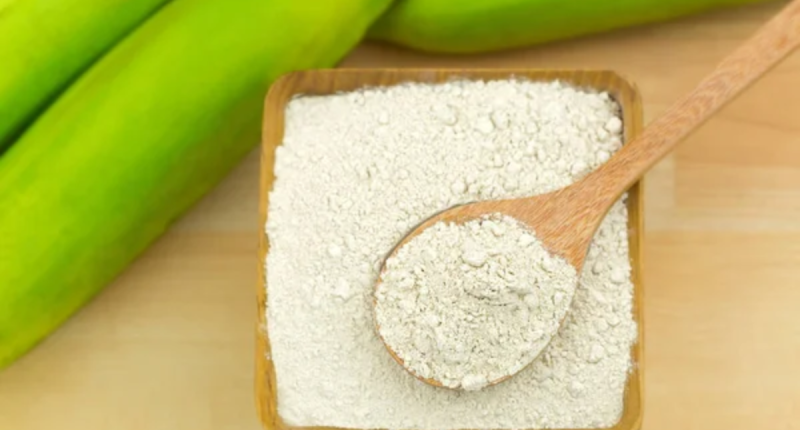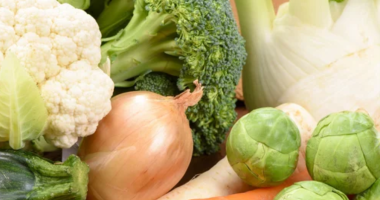Resistant starch, a unique type of starch that resists digestion in the small intestine, has emerged as a promising dietary component with potential benefits for diabetes management.
Studies have shown that resistant starch can help to improve blood sugar control in people with diabetes. One study found that consuming 30 grams of resistant starch per day for 12 weeks significantly reduced fasting blood glucose levels in people with type 2 diabetes. Another study found that resistant starch supplementation improved insulin sensitivity in people with prediabetes.
This starch passes undigested to the large intestine, where it serves as a prebiotic, nourishing the beneficial gut bacteria that reside there. These bacteria, in turn, produce short-chain fatty acids (SCFAs), which play a crucial role in regulating blood sugar levels, insulin sensitivity, and overall metabolic health.
SCFA Production and Blood Sugar Control
SCFAs, such as acetate, propionate, and butyrate, exert their beneficial effects in several ways. They enhance glucose uptake by the muscles and liver, helping to lower blood sugar levels. Additionally, SCFAs stimulate the release of incretins, hormones that promote insulin secretion and enhance insulin sensitivity. This improved insulin sensitivity allows the body to utilize glucose more effectively, further contributing to blood sugar control.
Anti-inflammatory Properties and Gut Health
Chronic inflammation, a hallmark of diabetes, is closely linked to insulin resistance and the development of diabetes complications. SCFAs possess anti-inflammatory properties, helping to reduce inflammation and mitigate the harmful effects associated with chronic inflammation. Moreover, SCFAs promote the growth and activity of beneficial gut bacteria, fostering a healthy gut microbiome. A balanced gut microbiome is essential for maintaining gut health and preventing the translocation of harmful bacteria that can exacerbate inflammation.
RELATED: 26 Foods Rich in Anti-Inflammatory Properties
Reducing Diabetes Risk
Studies have shown that individuals with a higher intake of resistant starch exhibit a lower risk of developing type 2 diabetes. This protective effect can be attributed to the positive influence of resistant starch on blood sugar control, insulin sensitivity, and inflammation, all of which play a role in diabetes pathogenesis.
Dietary Sources of Resistant Starch
Numerous plant-based foods serve as rich sources of resistant starch. Unripe bananas, particularly green bananas, contain significant amounts of resistant starch type 2 (RS2). Cooked and cooled potatoes, a common staple in many diets, transform into a good source of RS3. Legumes, such as beans, lentils, and peas, are excellent providers of RS1, another form of resistant starch. Additionally, high-amylose corn, a specific variety of corn, is naturally high in resistant starch and is often incorporated into processed foods.
Recommendations for Resistant Starch Intake
The recommended intake of RS for diabetes management is 15 to 30 grams per day. However, it is important to start with a low dose and gradually increase the amount over time to minimize potential digestive discomfort.
Ways to incorporate resistant starch into your diet

- Eat unripe bananas. Unripe bananas are a good source of resistant starch type 2 (RS2). You can eat them as a snack or add them to smoothies or yogurt.
- Cook and cool potatoes. Cooking and then cooling potatoes converts some of the starch into RS3. You can eat cooled potatoes in salads, soups, or stews.
- Eat legumes. Legumes are a good source of RS1. You can add them to soups, stews, salads, and grain dishes.
- Make overnight oats. Soak oats in water or milk overnight. This will convert some of the starch into RS3.
- Use green banana flour. Green banana flour is a good source of RS2. You can use it to make pancakes, waffles, and muffins.
- Use green plantain flour. Plantain flour is a good source of RS2. You can use it to make pancakes, waffles, and muffins.
- Use cassava flour. Cassava flour is a good source of resistant starch. You can use it to make bread, tortillas, and crackers.
- Use potato starch. Potato starch is a good source of resistant starch. You can use it to thicken soups and stews.
- Take a resistant starch supplement. Resistant starch supplements are available in powder and capsule form. They can be a convenient way to increase your intake of resistant starch.
Here are some tips for incorporating resistant starch into your diet without causing digestive problems:
- Start slowly. Start with a small amount of resistant starch and gradually increase the amount over time.
- Eat resistant starch with other foods. Eat resistant starch with other foods, such as fruits, vegetables, smoothies, oatmeal, or yogurt, to help your body digest it.
- Drink plenty of fluids. Drink plenty of fluids when you are eating resistant starch to help prevent constipation.
- Use resistant starch flour in baking: You can use resistant starch flour to bake bread, muffins, and other baked goods.
- Add resistant starch to soups and stews: You can add resistant starch powder to soups and stews to thicken them.
By following these tips, you can easily incorporate resistant starch into your diet and reap its many health benefits.
DON’T MISS: Do Bananas Raise Your Blood Sugar? Yes! Here’s Why
Managing Side Effects
Resistant starch can occasionally cause side effects, primarily gas and bloating, due to the fermentation process in the large intestine. To minimize these effects, start with a low dose of resistant starch and gradually increase the amount over time. Additionally, consider consuming resistant starch with fiber-rich foods, such as fruits and vegetables, to promote smoother digestion.
In conclusion, resistant starch emerges as a valuable dietary component with the potential to positively impact diabetes management. By enhancing blood sugar control, improving insulin sensitivity, reducing inflammation, and promoting gut health, resistant starch holds promise as a natural approach to diabetes prevention and control.
Continue to check our website for more articles of this kind. And, please use our comment section as well, we would love to hear from you.











